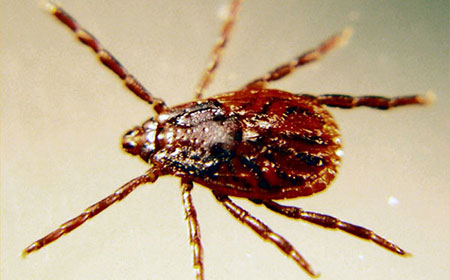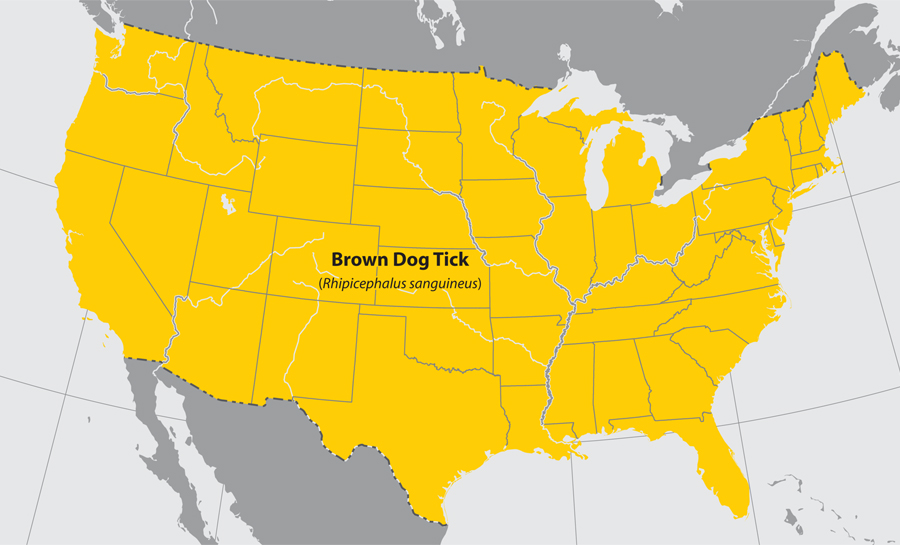Brown Dog Tick
(Rhipicephalus sanguineus)

The brown dog tick (Rhipicephalus sanguineus) can be found world-wide and all throughout the United States but are most commonly found in warmer regions. They can be found year-round in the southern regions or the U.S. and will prefer to be in areas highly populated with humans and domestic dogs.
Brown dog ticks have brown bodies and shields giving them a simple appearance. Their most noticeable physical characteristic is their basis capituli, which will come to a sharp outward point on either side.
The Tick Research Lab of Pennsylvania is able to detect the most common tick-borne diseases in any of these species. Our tick DNA tests are over 99.9% accurate.
Details
Habitat of the Dog Tick
Unlike other species of tick, the brown dog tick can survive indoors for its entire lifecycle, which can lead to infestation problems in homes and kennels. Once a few ticks are inside, infestations will become severe quickly.

Brown Dog Ticks Threaten Canine Health
Their preferred host is the domestic dog, although they can rarely be found feeding on humans, other domestic animals, rodents, and deer.
Brown dog ticks are known for transmitting Rocky Mountain Spotted Fever to humans and canine Ehrlichiosis and Babesia.
Brown Dog Tick Life Cycle
They are 3-host ticks just like the deer tick, but will typically feed on the same host at each life stage if they remain in the same home or kennel. Brown dog ticks will drop from the host after each blood meal before molting into their next stage of life. Because of their ability to live indoors, their life cycle varies greatly from other ticks and can be completed in just over two months. They will remain active year-round and can lay eggs at any time. Fertilized adult females can lay up to 5,000 eggs. If inside, the adult female will look for cracks in the floor or other crevices within the home to lay the eggs, contributing to severe infestations.
Brown dog ticks can live up to 5 months without feeding.

